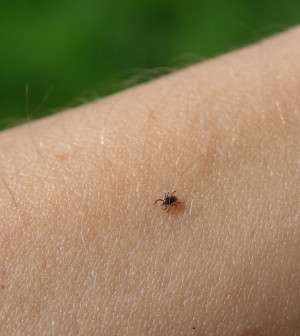- Navigating Your Midlife Crisis: Embracing New Possibilities
- City Raccoons Showing Signs of Domestication
- Mapping the Exposome: Science Broadens Focus to Environmental Disease Triggers
- One Week Less on Social Media Linked to Better Mental Health
- Your Brain Changes in Stages as You Age, Study Finds
- Some Suicide Victims Show No Typical Warning Signs, Study Finds
- ByHeart Formula Faces Lawsuits After Babies Sickened With Botulism
- Switch to Vegan Diet Could Cut Your Greenhouse Gas Emissions in Half
- Regular Bedtime Does Wonders for Blood Pressure
- Dining Alone Could Mean Worse Nutrition for Seniors
Pubic Grooming Tied to Higher STD Rates

Brazilian bikini waxing and similar forms of personal grooming may be all the rage, but they come with a heightened risk of acquiring a sexually transmitted disease, new research suggests.
The study found that frequent groomers of pubic hair are three to four times more likely to contract a sexually transmitted infection, such as herpes, human papillomavirus (HPV) or syphilis.
“Grooming is linked to a heightened self-reported sexually transmitted disease risk, and for those who groom frequently or remove all of their hair often, the association is even higher,” said lead researcher Dr. Charles Osterberg. He’s an assistant professor of urology and surgery at the University of Texas Dell Medical School in Austin.
Still, the study didn’t prove a direct cause-and-effect relationship between pubic grooming and sexually transmitted infections, it was only designed to show a link between these factors.
Pubic hair grooming and removal has become increasingly popular worldwide among women and men, as public perceptions have changed regarding the role of body hair in cleanliness and attractiveness, Osterberg said.
To see whether this grooming might have any connection to sexually transmitted infections, Osterberg and his colleagues surveyed 7,580 U.S. residents, aged 18 to 65, about their grooming practices, sexual behavior and history of sexually transmitted diseases.
Almost three out of four participants (74 percent) said they had groomed their pubic hair before. More women (84 percent) than men (66 percent) reported trying it at least once.
Among the groomers, 17 percent were classified as “extreme” since they remove all of their pubic hair more than 11 times a year. Twenty-two percent were labeled “high-frequency” groomers because they trim their pubic hair daily or weekly. One in 10 groomers fell into both categories.
Extreme groomers had a quadrupled risk of contracting a sexually transmitted infection. In addition, high-frequency groomers had a 3.5-fold increased risk of sexually transmitted infections, the results showed.
The researchers speculated that infections might spread more easily due to tiny cuts, scrapes and skin tears that result from grooming.
Dr. Dennis Fortenberry is a professor of pediatrics and adolescent medicine at the Indiana University School of Medicine and current president of the American Sexually Transmitted Diseases Association. He said, “I would probably lean toward the idea that the grooming itself causes mild trauma to the skin, and essentially makes the skin more susceptible to the organisms when they’re exposed.”
On the other hand, Osterberg noted, it might be that people who groom more often engage in more sex and are at higher risk for a sexually transmitted infection.
“Grooming may be a proxy for higher levels of sexual activity,” he added.
Overall, groomers tended to be younger, more sexually active, and to have had more sexual partners than those who don’t groom their pubic hair, the survey found. Extreme groomers had a higher number of sexual partners than any other category of groomer.
But, the researchers still found an 80 percent increased risk of sexually transmitted infections in anyone who reported having ever groomed at all, even after adjusting for the person’s age and their lifetime number of sexual partners.
There’s one bright spot for regular groomers — a reduced risk of pubic lice, the investigators found.
People who never or rarely groom their pubic hair have double the risk of pubic lice, the study authors reported.
“That’s how pubic lice end up breeding, in the hair itself,” Osterberg said. “You actually decrease your risk for lice by grooming.”
The study was published online Dec. 5 in the journal Sexually Transmitted Infections.
More information
For more on sexually transmitted diseases, visit the U.S. Centers for Disease Control and Prevention.
Source: HealthDay
Copyright © 2025 HealthDay. All rights reserved.










